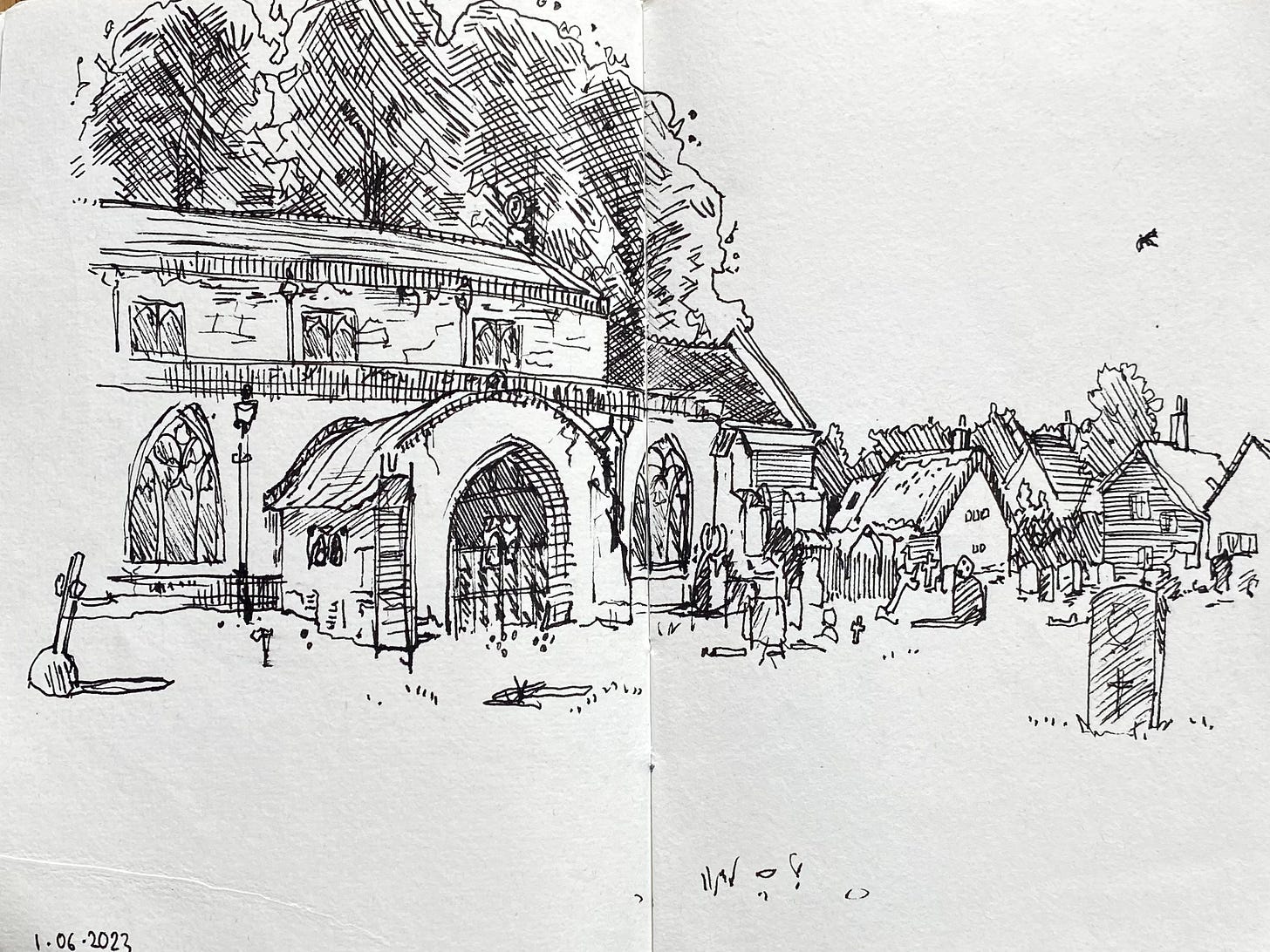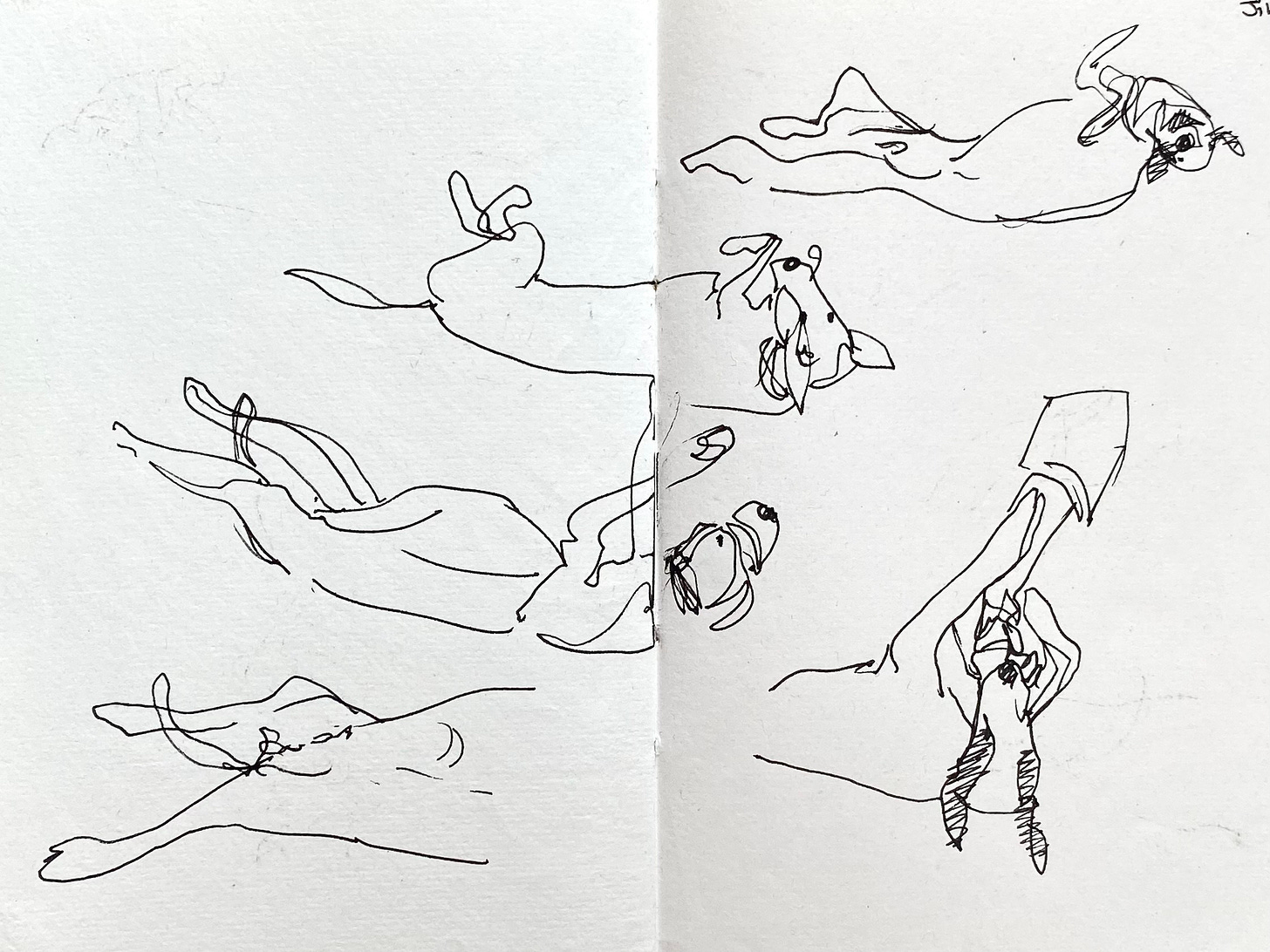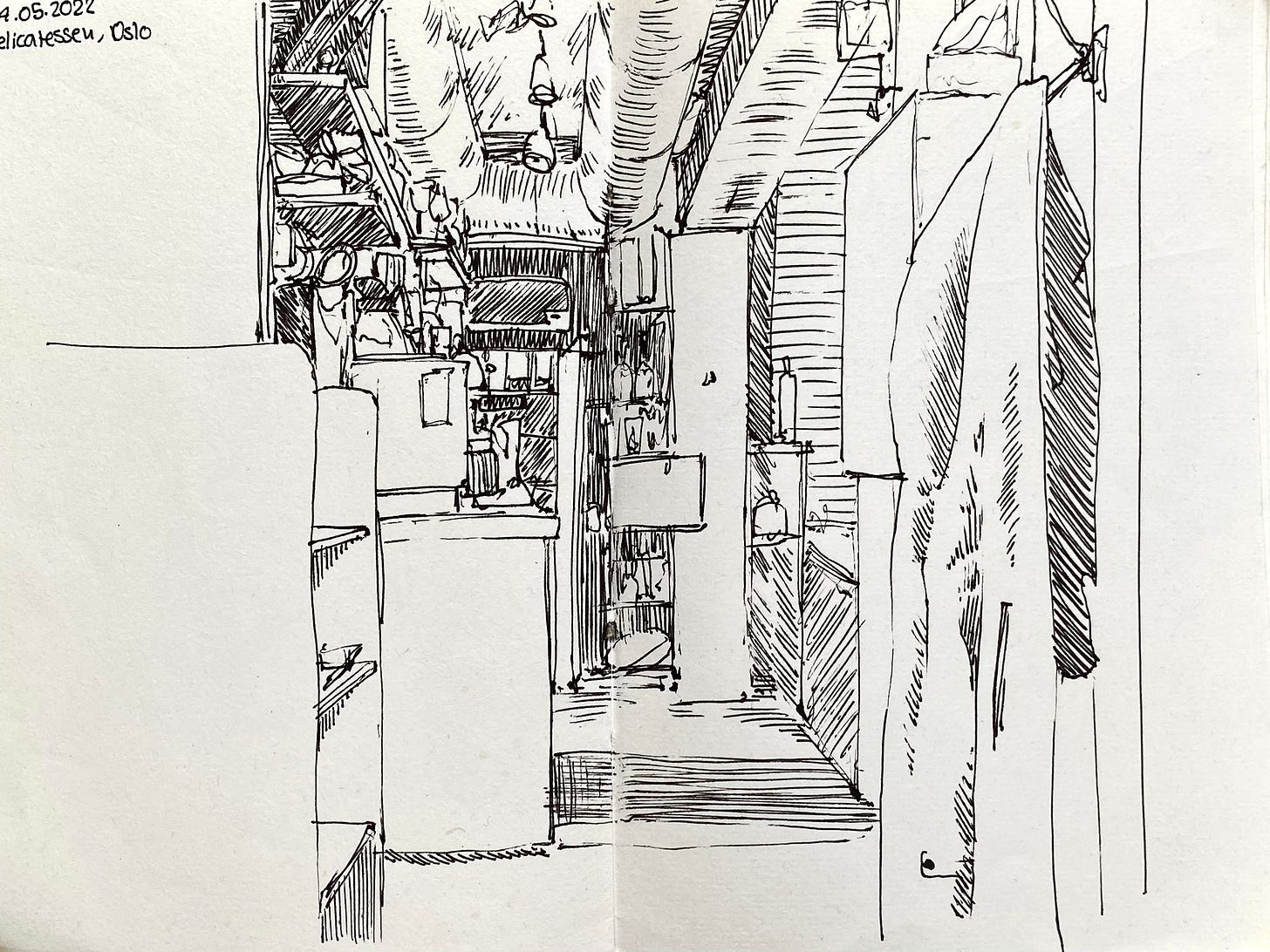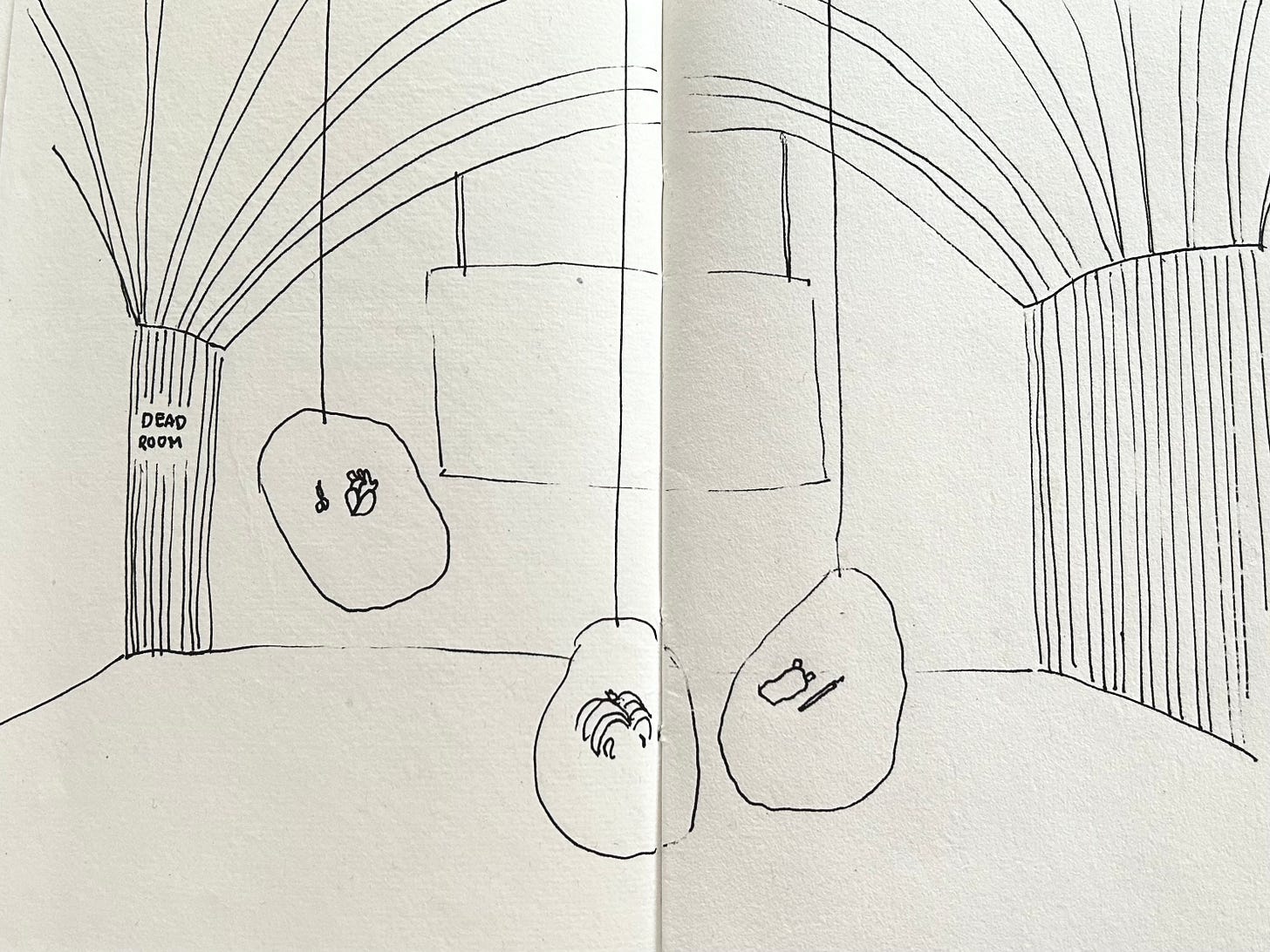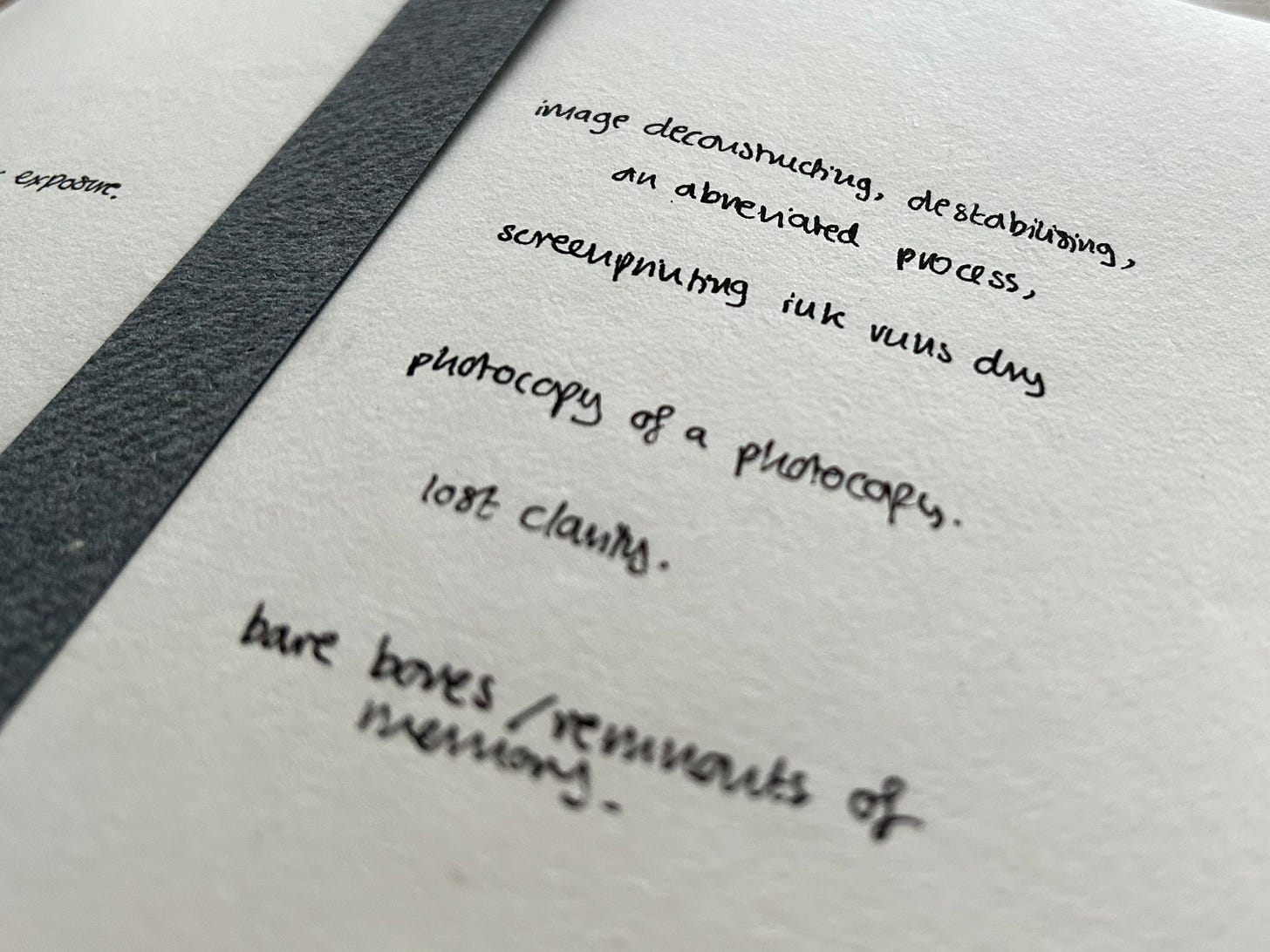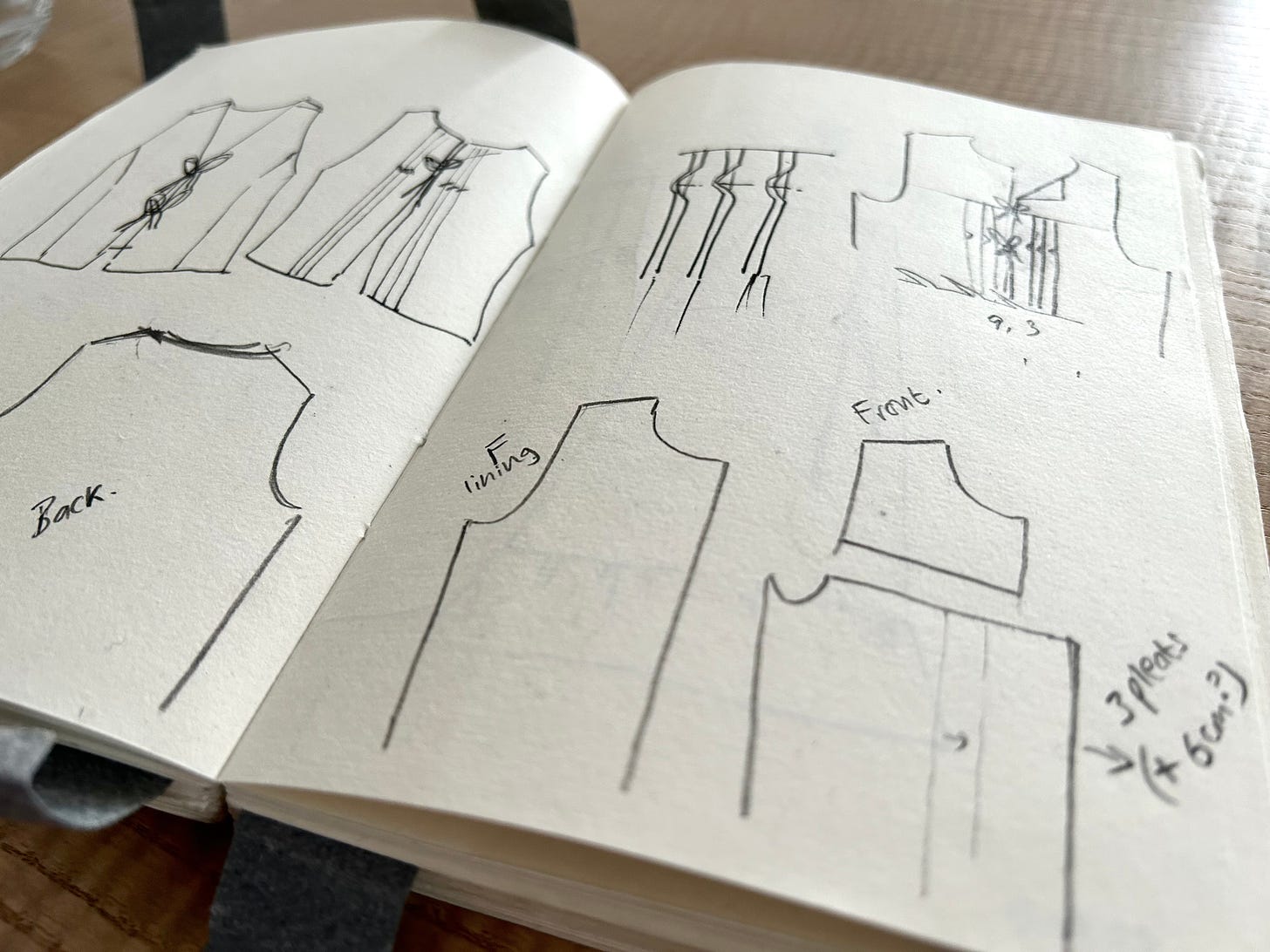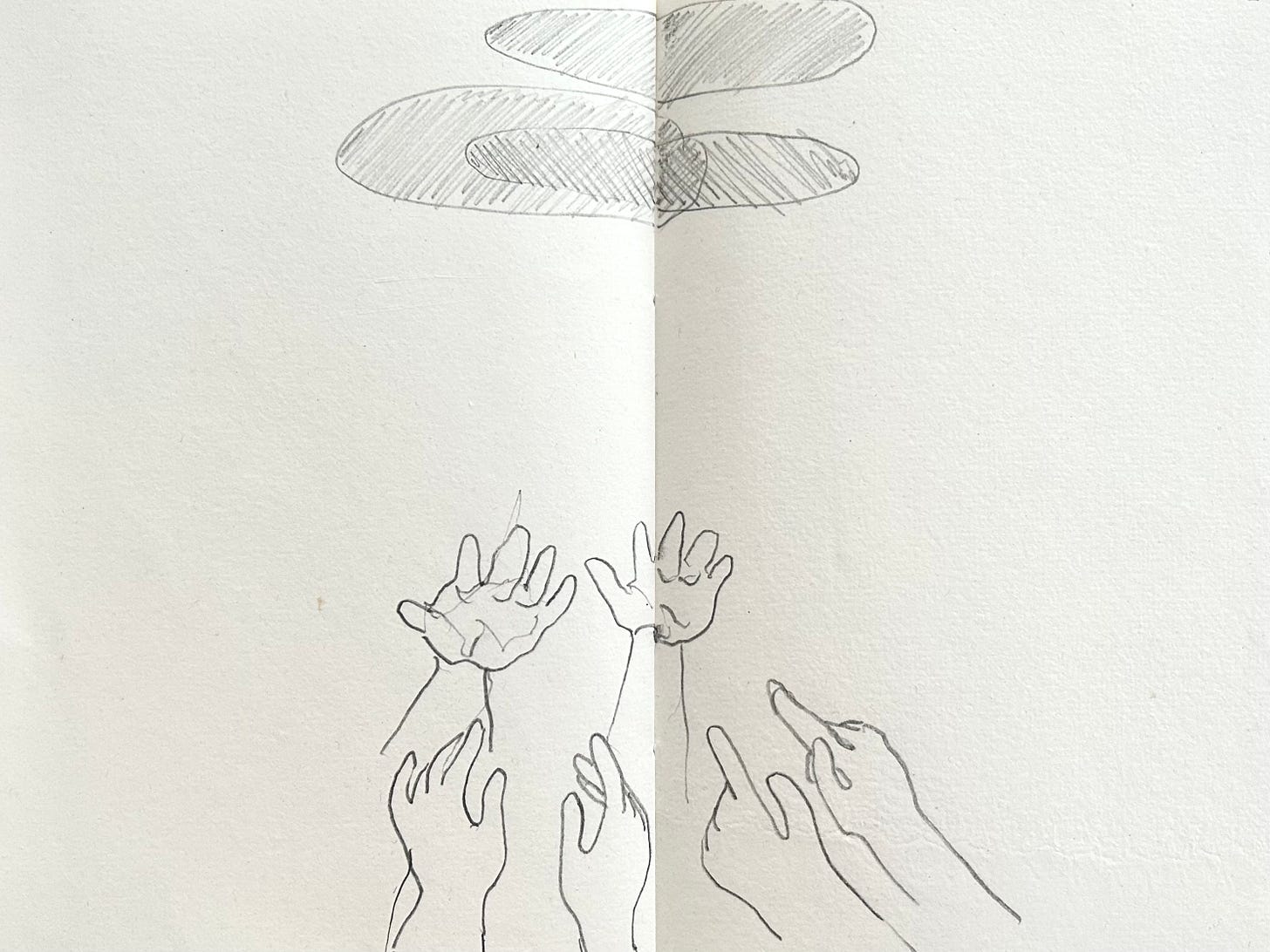A Sketchbook To Observe & To Think
The distinction between a sketchbook as a place for observation, and for ideas.
For years I’ve kept an observational sketchbook. I carry it with me when I go out, and use it to record the interplay of buildings, people, light, etc. - whatever interests me visually. While it’s not the primary purpose for my sketchbooks, I like that they serve as a visual diary of the past few years. I particularly enjoy drawing in cafes and restaurants, town squares and markets, and on public transport, so looking back through these drawings reminds me of the time I spent there.
This sketchbook isn’t, for me, conceptual - the ideas present in my practice are very much separate, which frees me up to draw whatever interests me at the time, without worrying about its relevance. It allows me to enjoy drawing for the sake of the time spent drawing - the tactile experience of putting pen to paper and translating observations of a space into a drawing. I particularly like trying to capture the atmosphere of the environment - bustling streets, hazy summer heat, claustrophobic bus or tube. I enjoy the feel of the sketchbook as it fills up - the slightly worn edges of the paper from carrying it in my bag. It becomes an object that exists as a cumulation of time spent observing, practicing my hand-eye coordination, recording.
I work non-chronologically in most of my sketchbooks - I feel it reduces the pressure on each drawing, and I think it helps me to appreciate the sketchbook as its own physical object - instead of only using the first half, page by page, I’m flicking through the whole book. If I never finish the sketchbook, it still exists in some way that feels purposeful, rather than forgotten about. The non-chronological nature also creates juxtapositions of imagery, which leads me to my second sketchbook - the collision space.
I’d like to go into more detail on this in another post, but to summarise, this sketchbook is the place where I record whatever comes to mind, without judgement. Images from dreams, quotes from books or other content, preliminary sketches for ideas, working out technicalities for sewing garments; it all ends up in the collision sketchbook.
This is a place where these small, seemingly unimportant pieces of visual and literal information can be stored, without being lost or thrown away, for me to find again. I call it the collision space because when looking back through this sketchbook, especially with some distance from when I first noted things down, the random placing of thoughts and ideas creates energy for new ideas to form. I often think it feels like coming across someone else’s great ideas, that you haven’t before seen, but with this amazing knowledge that you’re free to use them as your own. It’s my favourite starting point for when I’m feeling lost in my own practice.
We Invite You…
Think about what your sketchbook or book might be used for. It can be helpful to understand what its purpose might be as a starting point for working in it. Is it observational? Maybe you decide it’s a book that will only take you a week to fill - let each drawing happen without too much planning, try to listen to your instincts. Is it a place to collect thoughts and inspirations? Maybe think about having a few books on the go at once, which can reduce the pressure felt on each sketchbook to be ‘perfect.’
Take a look at The Sensory Sketchbook for some thoughts on choosing or making the right sketchbook for you.
We Recommend:
We really like the following manufactured sketchbooks:
Khadi Paper Sketchbooks (the sketchbooks shown in the images in this post)
Seawhite Casebound Sketchbooks




